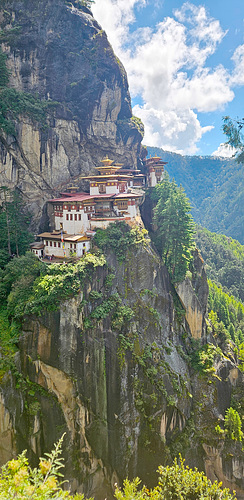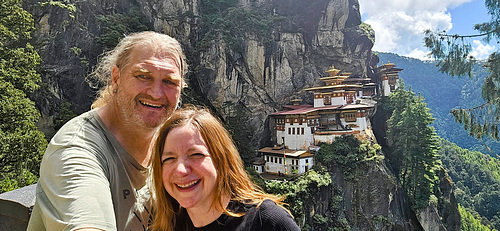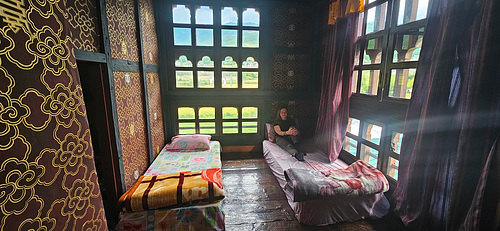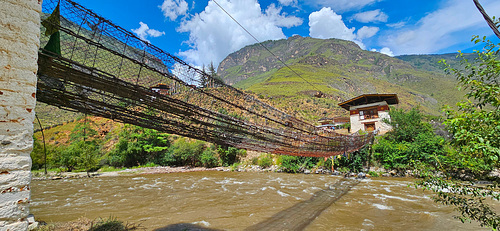16 to 20 Dec, 2024 - Kuwait City - (Kuwait)
Why Kuwait? It seemed a region just suitable for a four day stop, easily accessible from our waypoint in Doha. A few things to do, but no pressure to fill our days.
It perfectly fulfilled our need. We had an enjoyable stay, with our last day being reserved for a shave after breakfast before our flight.
Kuwait is a strictly dry country. This is really not a problem, especially for a short stay. They seem to make up for it with smoking. Particularly hard to get used to in restaurants.
Warm, welcoming, hospitable. Small in territory, big in heart and flavour. Climate was unexpectedly chill. 18 was a few degrees lower than we expected, but the general consensus was we had come at the right time of year. "In the heat, you can feel the moisture sapping from your body the moment you step out", someone described. "People go shopping at 1 in the morning so they avoid the daytime." Unfortunately, the cool time is short, leading to a general lack of heading infrastructure. Our hotel room was a few degrees cooler than we would have chosen.
Day one was extremely relaxed and laid back. Lots of walking, and a long time in the souq. Having hardly any luggage on this return to Australia, we also did not hold back with the souveniers.

Tea in Souq Mubarakiya
After a not too strenuous time in the Souq, we stopped for tea. A smouldering container of coals ensured what was in the pot did not cool, and we must have sat there sipping for a solid hour and a half, at least.

Regret
The cat decided it would be tolerant. It came out from under the table to allow itself to be patted. Admittedly, the boy was not trying to hurt, taunt, or in any way upset the cat. He just wanted to play. Now the cat was obliged to play. The boy carried it around, put it on chairs. He moved it to another locale where he stopped and stroked it. Bit by bit he upped the ante. More physical and more boisterous. Eventually literally swinging the cat. All the while, the cat had an expression on, indicating it knew it could finish all the torment with one strike of the claw, yet resisting the urge for the well meaning but misguided child.

Grand Mosque, Kuwait
A seemingly bored security guard picked us up at various points as we wandered through the mosque. He indicated areas we may have missed, and pointed out things that may have needed a guide. He invited us to go up to the pulpit to view. We got some tea, juice, water, and snacks. A pleasant visit to this 10,000 capacity building.
Kuwait today largely shaped by the Gulf War. By all accounts, the events of the 90s put the country back 20 or more years. If it wasn't for that event, Kuwait City may have rivalled Doha or Dubai. Encountering war remnants was confronting and moving. Both on Failaka Island, where we travelled for the day, and in the outskirts of the city.
On our third day, we met a hospitable Kuwaiti gentleman who insisted on driving us to our hotel, not letting us take a taxi. In the car, I asked him about the war period. He responded that he had been a prisoner for three months, in Baghdad. That was a sobering thing to find out about someone.

Tank Cemetery
An area on Failaka Island, where abandoned military hardware from the Gulf War has been collected. One of the first pieces of Kuwaiti territory to fall to Iraq in the 1990 invasion, it has never recovered. The residents did not return, and other than some nice beaches with a resort and a small amount of tourist infrastructure, the island is fairly desolate.

Bullet Riddled Bank Building
The National Bank of Kuwait on Failaka Island. Some reading suggests this bank never actually opened. It was allegedly due to open about the day that Iraq invaded. The story of the bank is cloudy, and what events may have led to its particular targeting are as varied as ones imagination.

Inside the Bank
National Bank of Kuwait, Failaka Island.

Looking Out from the Market
The abandoned and ruined market of Failaka Island, looking through to the bank building.

In the First Floor
An apparent location for a gun fight. The brickwork around each window was pockmarked with bullet holes. Where I was standing was a bathroom, severely damaged fittings in place.

Climbing the Minaret
As the sun went down and soft light permeated the town and its plethora of abandoned buildings, we entered the mosque, and were surprised to discover the stairwell was intact and solid. Unfortunately, the collapsed railing meant we could not venture from the door on to the small encircling balcony.

Side of Al Qurain Martyrs Museum
A small pocket of resistance was discovered here, by the Iraqi occupation forces. For hours the house was strafed and rocketed, grenades deployed, and eventually, after a tank was brought in, most of the surviving occupants were taken. Four managed to hide in a roof space to tell their stories - those who were taken prisoner did not survive.

Iraqi Tank, Al Qurain
A tank, in position, across from the house of resistance. Just days before the Gulf War ended, the tank brought an end to the siege of this building.
More generic sights in Kuwait. While some were predicatable, the mirror house may have been the most unexpected point of interest we could have come across.

Some Failaka Island Residents

An Obvious Place to Relax

A Kuwaiti Feast

The Avenues Shopping Mall
Kuwait City.

Wonderfully Eccentric Lidia Al Qattan
Lidia is the artist transformer who spent some 40 years covering almost the entire house, inside and out, in mirror mosaics. Italian born, but married to a Kuwaiti. Her late husband was a politically controversial artist, Khalifa Al Qattan.
Interactive Art
Lidia's art is fun, and much of it is interactive. She uses light and sound, inviting people to immerse themselves in her creations. This art was a game, and involved throwing art decorated tiles with velcro up against rugs. Jo and I were unfortunately beaten by the other pair of guests. Many of her rooms are decorated with astronomical and galactic themes. Glow in the dark elements come to life when the lights are turned off.












































